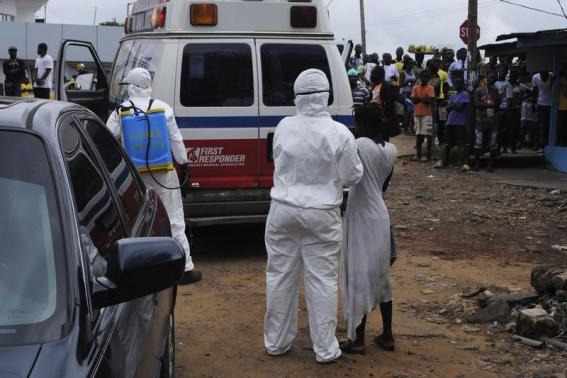
The Vaccine Time Bomb: For several decades now, vaccines have worked so peacefully, with few lashing out, saving millions of young lives and preventing deadly diseases such as measles and polio from running rampant. It’s one of humanity’s greatest public health achievements 154 million childhood deaths prevented and still counting. Here’s the catch; the protective armor that once kept us all safe is beginning to erode. From Afghanistan to Europe and even the U.S., deadly diseases are crawling back. Behind the scenes, cuts to global funding, spread of misinformation, and health systems that are stretched too thin are brewing a perfect storm for a global crisis. As for the ripple effect to other states? It’s not just our health that’s being slammed, but our economies as well. Welcome to the vaccine time bomb tick-tock, the clock has started ticking.
The Vaccine Time Bomb
Since the launch of the first vaccine against measles in 1974, expanded routine immunization campaigns from measles to polio have averted an estimated 154 million deaths, the majority in children under age five.
Following steady increases through 2010, immunization rates have stagnated or even reversed in numerous areas. While global first-dose measles coverage increased steadily from ~72% in 2000 to 84% in 2010, growth stagnated and reversed between 2011 and 2019, including decreases across 21 of 36 high-income countries.
83% received one measles dose, 74% two doses. We did see some growth in IPV though increased third-dose coverage maintained at 83%, but still low second-dose IPV coverage at 42%.
Pharmaceutical Stocks Skyrocket Amid Breakthrough Vaccine News
Alarming Resurgence of Vaccine-Preventable Diseases
Global unvaccinated measles children increased 15%, from 19.3 million in 2019 to 22.2 million in 2023. Europe has seen a tenfold increase in 2024. The U.S. 2025 outbreaks have already surpassed last year’s figures.
Lasting endemic circulation continues in Afghanistan, Pakistan and Papua New Guinea. Until such time as it is eradicated, global importation is a continual threat.
Researchers at the University of Washington join global call to action: Without immediate and sustained efforts, a new WHO strategy Immunization Agenda 2030 to end disparities and reduce disease burden will not be achieved.
Picture this. USIP has hosted a number of healthcare professionals on conflict-related fragility in healthcare, especially in war zones. Health service coverage in 31 fragile countries has fallen by 3–5% points since 2019.
- Major donors, notably the UK and U.S., have slashed funding for vaccine assistance. UK aid fell by 40% over the past four years, leaving GPEI facing a $1.7 billion gap, risking reintroducing 200,000 additional polio cases per year.
- VIncreasing distrust around the world exemplified by The Guardian’s report on how austerity has eroded the public’s trust in science.
Market & Financial Implications
Vaccine market dynamics: Growing at ~10–15% per year, vaccines are still a relatively small but rapidly growing category (2–3% of pharma). While the majority of funding comes from the public and nonprofit sectors, production is dominated by a small number of major players.
ROI: Since 2000, WHO has immunized more than 1 billion children, with every $1 invested returning an estimated $54 of wider economic value. Return of investment fuels both social and financial capital returns.
Outbreaks of vaccine-preventable diseases increase healthcare expenditures and put a severe burden on budgets, hampering supply chains that cross the globe. They discourage responsible investment in sensitive areas thereby impeding the flow of much-needed developmental finance.
Risk to manufacturers: Funding shortfalls present acute financial risk for manufacturers such as Serum Institute of India, who had expanded production capacity for new vaccines such as R21 malaria but now has no clearer.
Wider Economic Stressors
Negative contributions to GDP drag Chinaโดยเฉลี่ย now, in the first half of 2023, set to -3.6% from the economy Outbreaks impede labor supply, tourism, trade—which can significantly affect GDP in advanced markets as well as such emerging economies.
Increased severity of outbreaks leads to a spike in payouts and insurance premiums through life, travel, and outbreak-risk insurance policies.
Investor aversion Heightened and systemic geopolitical risk stemming from pandemics rapidly moves capital away from risk-prone markets, eroding sovereign bond performance and exacerbating financing challenges for low‑income countries.
The “vaccine time bomb” indicates a watershed moment: without sustained investment in funding, infrastructure, community trust-building and equitable access, we risk decades of progress being reversed. This drift not only threatens health goals in the short and long term. It destabilizes markets, economic systems, and global security.
Fulfilling the 2030 immunization agenda is not only a moral imperative. It’s a wise investment. Boosting high-quality global immunization infrastructure pays outsized dividends in global economic resilience, public trust in science, and prevention of the next pandemic.

